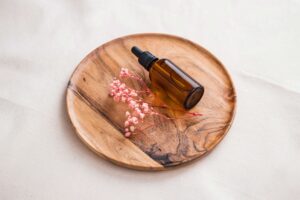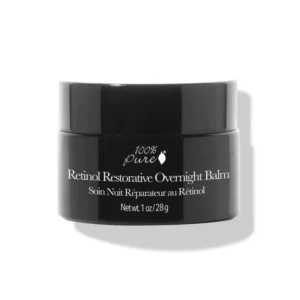Retinoids Decoded

Embarking on a journey to transform your skincare routine can be both exciting and overwhelming, especially when diving into the world of retinoids. Renowned for their powerful anti-aging and skin-renewing properties, retinoids have become a staple in many skincare enthusiasts’ routines. If you’re new to the world of retinoids, fear not! This comprehensive guide will provide you with essential tips and insights to help you navigate the transformative benefits of retinoids without any of the confusion.
Understanding Retinoids: The Basics
- What are Retinoids? Retinoids are a class of compounds derived from vitamin A that play a crucial role in skin health. The umbrella term “retinoids” encompasses various forms, including retinol, retinyl palmitate, and prescription-strength options like tretinoin (Retin-A) and adapalene. These compounds are known for their ability to promote skin renewal, stimulate collagen production, and address a range of skincare concerns.
- How Retinoids Work: Retinoids work at a cellular level by promoting cell turnover. They encourage the shedding of old, damaged skin cells and stimulate the production of new, healthier ones. This process not only enhances skin texture but also addresses issues like fine lines, wrinkles, and uneven skin tone.
Tips for Retinoid Beginners:
- Start Slow: If you’re new to retinoids, it’s crucial to introduce them gradually into your routine. Begin with a lower concentration, such as 0.25% or 0.5% retinol, to allow your skin to acclimate. Starting slow minimizes the risk of irritation and helps your skin build tolerance over time.
- Choose the Right Product: There is a plethora of retinoid products on the market, ranging from over-the-counter retinol creams to prescription-strength options. For beginners, over-the-counter products with lower concentrations are a great starting point. Look for formulations that combine retinol with soothing ingredients to mitigate potential irritation.
- Consider Formulation: Pay attention to the formulation of the retinoid product. Creams and serums are popular choices, and some products incorporate moisturizing elements to counteract potential dryness or sensitivity. Opt for a product that aligns with your skin type, whether it’s normal, oily, dry, or sensitive.
- Apply on Dry Skin: To maximize the effectiveness of your retinoid, apply it to dry skin after cleansing. Applying retinoids to damp skin may increase the risk of irritation. Wait a few minutes after cleansing before gently patting the retinoid onto your face.
- Use Sunscreen Religiously: Sun protection is non-negotiable when incorporating retinoids into your routine. Retinoids can make your skin more sensitive to UV rays, increasing the risk of sun damage. Apply a broad-spectrum sunscreen with at least SPF 30 every morning, even on cloudy days, to safeguard your skin.
- Expect Some Irritation: It’s common to experience mild irritation when first using retinoids. Redness, dryness, and peeling may occur as your skin adjusts. If irritation persists, consider reducing the frequency of use or opting for a lower concentration. However, mild irritation is often a sign that the retinoid is working its magic.
- Avoid Mixing with Certain Ingredients: Retinoids can be potent, and some ingredients may exacerbate sensitivity when used in conjunction. Avoid pairing retinoids with products containing benzoyl peroxide, vitamin C, or other potentially irritating compounds, especially when you’re just starting out. As your skin builds tolerance, you can gradually introduce these ingredients.
- Patience is Key: Patience is a virtue when it comes to retinoids. Results won’t happen overnight, and it may take several weeks to months before you notice significant changes in your skin. Consistency is key – stick to your routine, and the long-term benefits will be worth the wait.
Retinol Restorative Overnight Balm

Addressing Common Concerns:
- Peeling and Dryness: If you’re experiencing peeling and dryness, it’s essential to prioritize hydration. Incorporate a gentle, hydrating moisturizer into your routine to soothe and replenish your skin’s moisture barrier. Consider applying the moisturizer before your retinoid to create a protective barrier.
- Redness and Irritation: Redness and irritation are common side effects, especially during the adjustment period. If these symptoms persist, try using your retinoid less frequently or switch to a lower concentration. Additionally, opt for products with anti-inflammatory ingredients, such as chamomile or aloe vera, to soothe irritated skin.
- Pregnancy and Breastfeeding: If you’re pregnant or breastfeeding, it’s advisable to consult with your healthcare provider before incorporating retinoids into your skincare routine. Some forms of vitamin A, especially prescription-strength retinoids, may not be recommended during this period.
As you embark on your retinoid journey, remember that every skincare routine is unique. What works for one person may not work for another, so it’s essential to tailor your regimen to your specific needs. The transformative power of retinoids lies in their ability to renew and revitalize your skin over time. By following these tips for beginners, you’ll be well on your way to achieving a radiant and more youthful complexion. So, embrace the journey, be patient, and let the power of retinoids unveil a more beautiful version of your skin.

